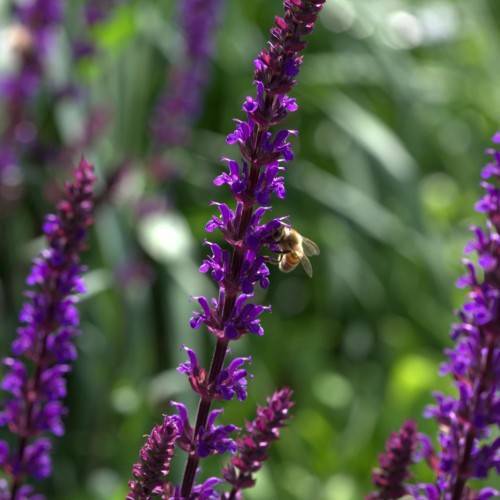
sage
Salvia nemorosa 'Lubecca'
Cycle:
Herbaceous Perennial
Watering:
Minimum
Hardiness Zone:
4 - 8
Flowers:
Flowers
Sun:
Full sun
Leaf:
Yes
Growth Rate:
Low
Maintenance:
Low
Drought Tolerant:
Yes
Salt Tolerant:
Yes
Care Level:
Medium
watering
Sage (Salvia nemorosa 'Lubecca') should be watered once every 5 to 7 days. The amount of water required for your sage will depend on the size and age of the plant, as well as the temperature and climate. In general, you'll want to give sage enough water to keep the soil evenly moist but not waterlogged. During hotter months, you may need to increase the watering frequency to every 4-5 days. To prevent over-watering, poke your finger into the soil near the base of the plant to feel the soil’s moisture levels before watering. If the soil feels evenly and lightly damp, the plant likely does not need to be watered yet.
sunlight
For optimal growth, Sage (Salvia nemorosa 'Lubecca') should be planted in full sunlight for approximately 6-8 hours a day. Early morning and late afternoon sun provide the best sunlight for this species. In zones 4-9, where this plant is usually grown, it needs full sun from spring through early summer. In areas with hot summers, however, afternoon shade is beneficial to provide some relief from the hot sun. Overall, the Sage needs a lot of light to thrive, and making sure it receives adequate direct sunlight will ensure its growth and health.
pruning
To keep your Sage (Salvia nemorosa 'Lubecca') looking its best, it's best to prune them in early summer after the spring bloom has stopped. Start by removing any wilted, dead, or diseased foliage. Trim any leggy and overgrown stems to encourage bushier growth. To maintain a bushier form, consider snipping a third of the stems back to just above the lowermost leaf set. Lastly, trim off any branching that is heading to the outside of the plant, as this can cause crowding and unsightly bare spots in the center.
